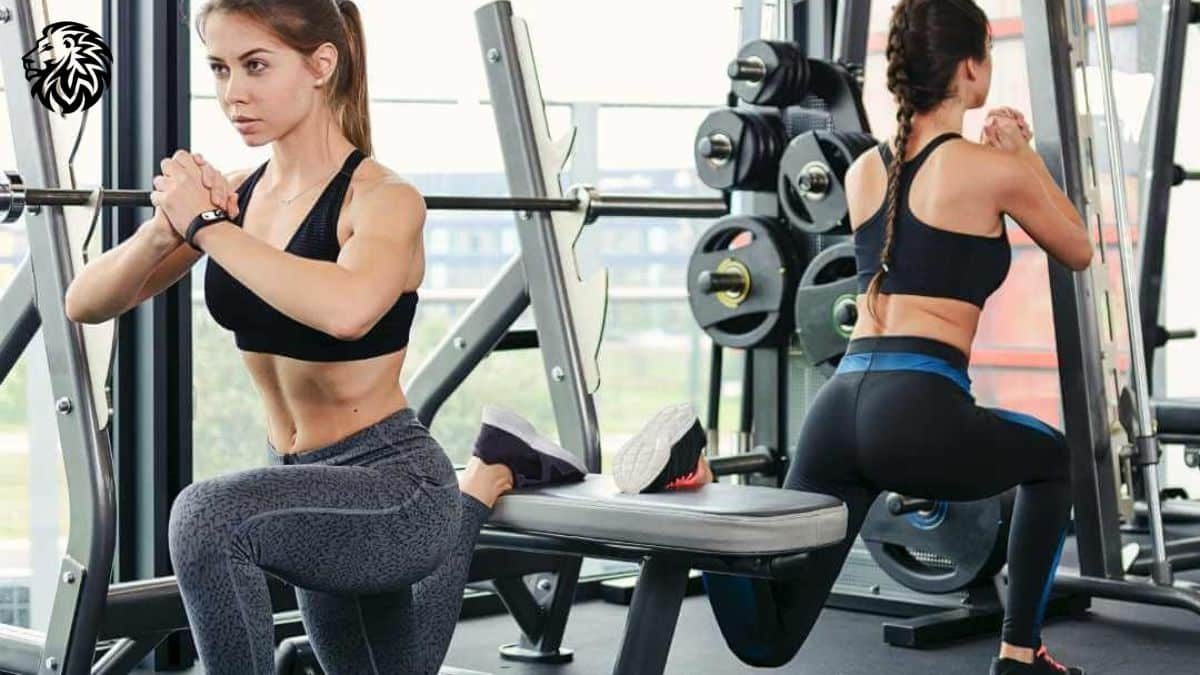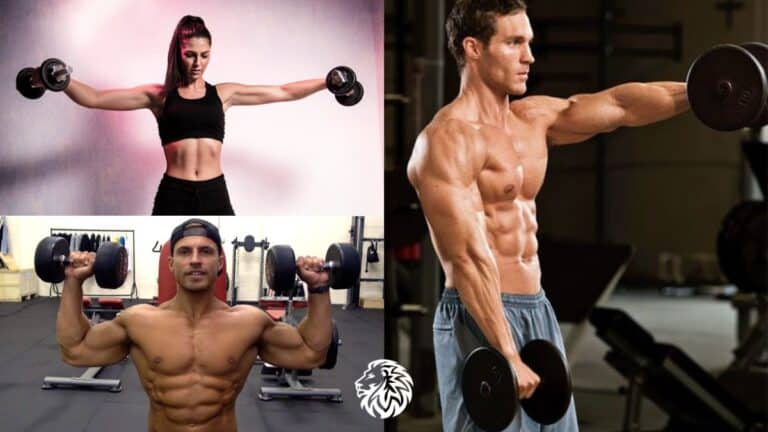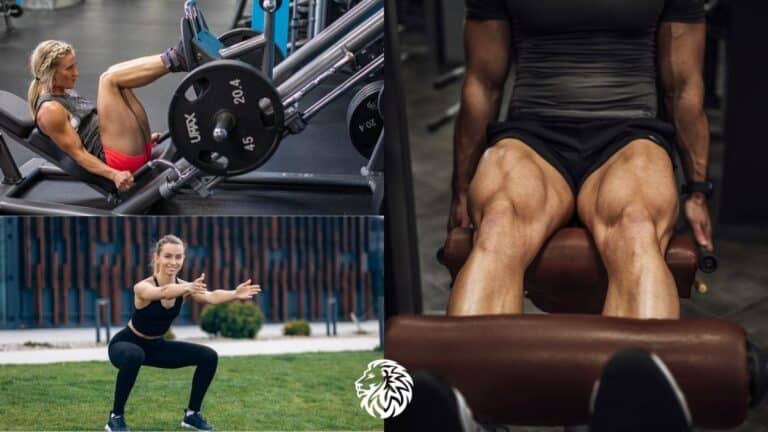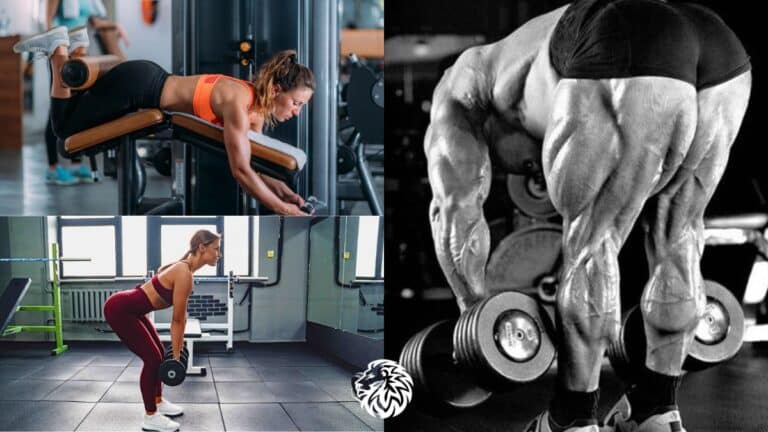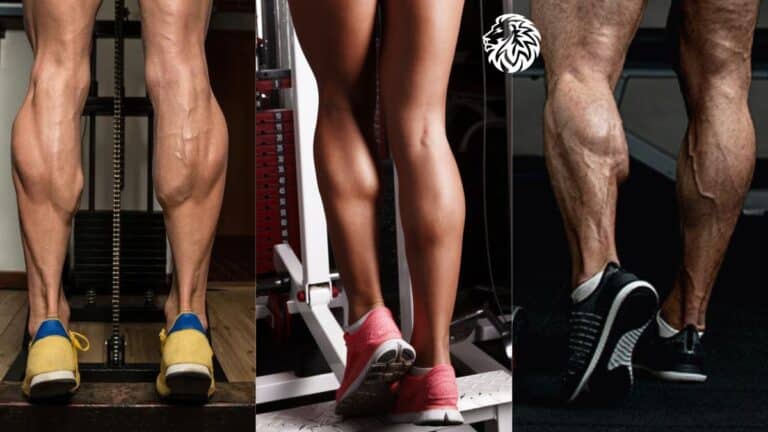These days, it seems like everyone at the gym is on a mission for a set of strong, sculpted glute muscles – and it’s not just about looking good. The buzz around building better buns isn’t just a passing trend; it’s about finding that sweet spot where good looks meet good health.
Let’s talk about the stars of the show – our glutes. They’re the powerhouse trio of the booty world: the gluteus maximus, gluteus medius, and gluteus minimus. The big boss, the gluteus maximus, is the one that gives our backside its shape and helps us do everything from grooving on the dance floor to hustling up a flight of stairs. These muscles aren’t just for show; they’re key players in keeping us mobile and stable, not to mention they’re the unsung heroes that can keep nagging back pain at bay, give our athletic endeavors a boost, and up our overall strength game.
When it comes to building these muscles, there’s no one-size-fits-all magic formula. It’s a bit like cooking a gourmet meal; you’ve got to have the right mix of ingredients like genetics, hormones, what we eat, how we workout, and how much we rest, all seasoned with our day-to-day lifestyle choices.
What we’re here to chat about is how to stir up that perfect recipe for glute growth. We’ll spill the beans on what to realistically expect as your glutes go from flab to fab, and we’ll serve up some hot tips on training smarter, eating to support your muscles, and fitting it all into your life.
Think of this as your go-to guide for getting a firmer, rounder behind. We’ll break down the science of muscle-making, sift through the fact and fiction, and give you the lowdown on patience – because good things come to those who squat.
Whether you’re just stepping into the fitness scene or you’re trying to up your glute game, stick with us. We’re here to give you the inside scoop on how to make those glute goals a reality. Let’s get to it!
Understanding Glute Growth
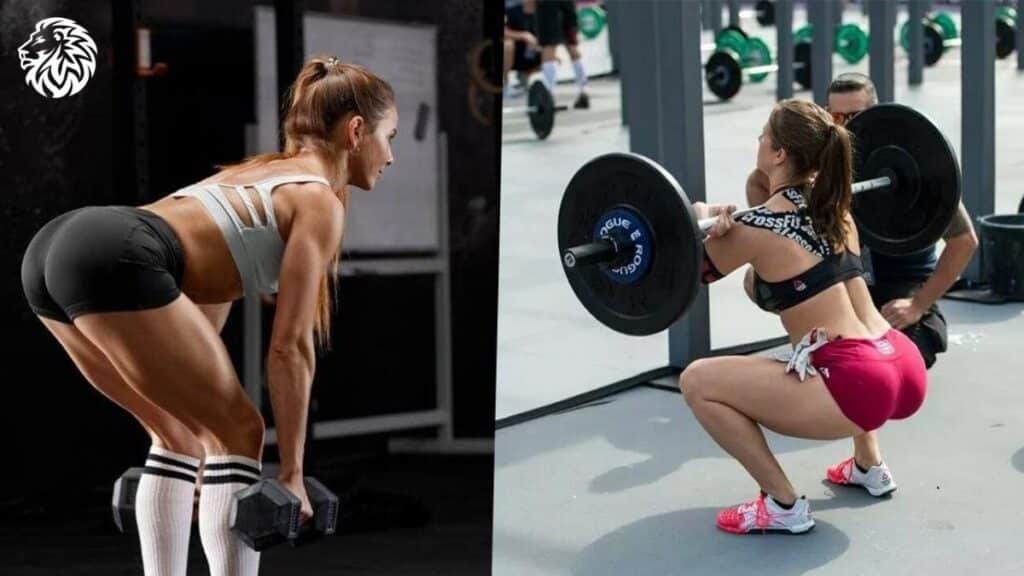
Embarking on a journey to sculpt and strengthen your glutes requires more than just enthusiasm; it demands an understanding of the biological processes and unique characteristics of these muscles. Let’s unpack the science behind muscle growth and the specifics of glute development.
The Biology of Muscle Growth (Hypertrophy)
Muscle growth, or hypertrophy, occurs when the fibers of the muscle sustain damage or stress, leading to a repair process that thickens and strengthens them. This adaptive process is typically induced through resistance training, which challenges the muscles, creating microscopic tears in the muscle fibers. In response, the body repairs these fibers, and with proper nutrition and rest, they grow back stronger and often larger, provided the stimulus is consistent and progressively challenging.
How the Glutes Differ from Other Muscle Groups
The glutes are unique for several reasons:
- Composition: The gluteal region is composed of three major muscles, each with specific functions and fiber orientations. This complexity allows for a wide range of motion and supports varied forms of exercise targeting different aspects of the glutes.
- Size and Strength: The gluteus maximus is one of the body’s largest and most powerful muscles, capable of producing significant force. Its size and power mean it can be more challenging to fully activate and fatigue during exercise compared to smaller muscle groups.
- Functionality: Unlike other muscles that are primarily used for mobility, the glutes are also crucial for stabilization. They play a key role in maintaining pelvic and spinal alignment, affecting posture and functional movements throughout the day.
The Role of Genetics and Hormones in Glute Development
Genetics play a pivotal role in determining the natural shape and potential for muscle growth in the gluteal area. Factors such as muscle fiber distribution, bone structure, and fat deposition patterns can all influence how the glutes respond to training and develop over time.
Hormones, particularly testosterone and growth hormone, are essential for muscle repair and growth. The levels and balance of these hormones can affect how quickly and significantly one’s muscles can grow, including the glutes. Women, for example, may find it more challenging to achieve significant muscle hypertrophy compared to men due to lower testosterone levels, but can still build strong and well-shaped glutes with the right approach.
In the following sections, we’ll explore how to leverage your workouts and lifestyle to maximize your genetic and hormonal potential for glute growth.
The Timeline of Glute Growth
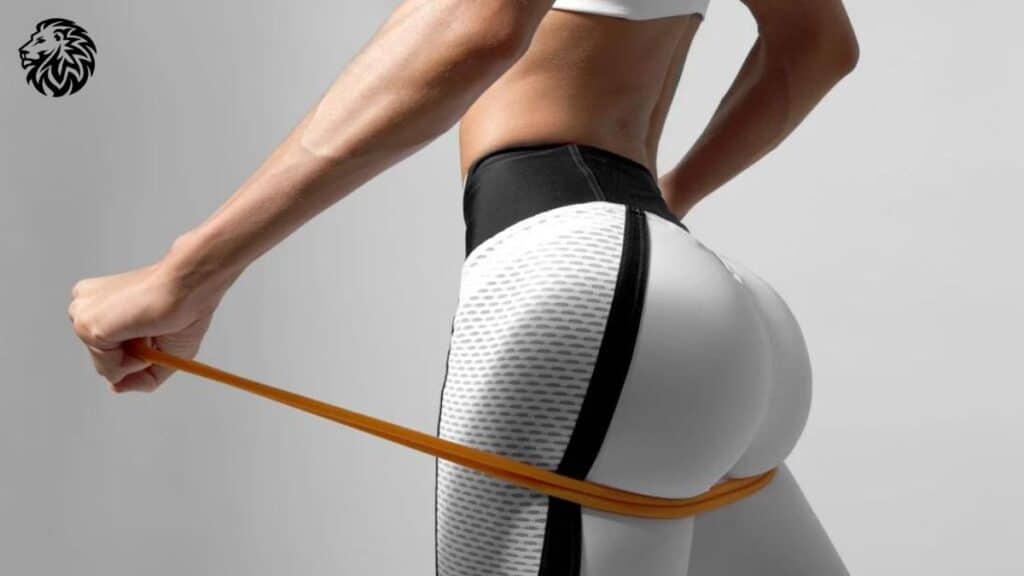
Understanding the timeline for muscle development, especially for a group as complex as the glutes, can set realistic expectations and sustain motivation. Muscle growth is not instantaneous, but a gradual progression that rewards consistency and dedication. Here’s a breakdown of the typical stages of glute growth and what to expect in each phase.
Early Adaptations (Neurological Gains)
- First Few Weeks: The initial phase of strength training is characterized by neurological adaptations rather than visible muscle growth. Your nervous system becomes more efficient at recruiting muscle fibers, especially those that are rarely used in everyday activities.
- Coordination and Strength: As your body learns to activate the glute muscles more effectively, you may notice improvements in coordination, balance, and overall strength during exercises.
Short-term Changes (1-3 Months)
- Muscle Endurance: With consistent training, you’ll likely see an increase in muscle endurance and the ability to perform more repetitions or use heavier weights.
- Early Hypertrophy: Towards the end of this phase, you might start to see some changes in muscle size, though this can be subtle and vary greatly from person to person.
Medium-term Development (3-6 Months)
- Visible Hypertrophy: With continued effort, muscle fibers thicken, and you may observe more noticeable muscle growth and definition.
- Strength Gains: Alongside hypertrophy, you should experience significant strength gains, allowing for increased resistance and more challenging workouts.
Long-term Growth (6 Months and Beyond)
- Significant Muscle Development: Prolonged, consistent training coupled with proper nutrition and rest should result in significant glute growth and strength improvements.
- Maturity and Definition: The shape and definition of the glutes will become more pronounced, and strength levels should stabilize as you reach new plateaus.
Plateaus and How to Overcome Them
- Encountering Plateaus: It’s common to hit a plateau in muscle growth, where improvements seem to stall despite ongoing efforts.
- Overcoming Stagnation: To push past these periods, you may need to alter your training variables—such as exercise selection, volume, intensity, and rest— or address dietary and recovery aspects.
- Continued Progression: Periodization and strategic variation in your workout program can be key to continued advancements, preventing adaptation and stimulating further muscle growth.
In the upcoming sections, we will delve into the specifics of each factor that can influence the rate and quality of glute growth. Keep in mind that these timelines are general estimates and individual experiences may differ based on a myriad of personal and lifestyle factors.
Key Factors That Affect Glute Growth
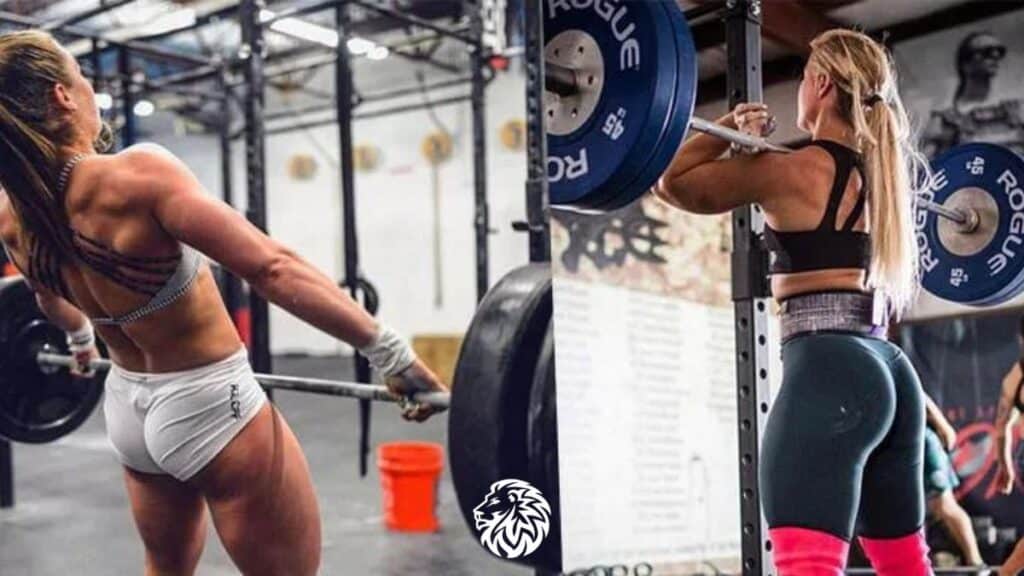
Building your glutes is akin to constructing a building; it requires the right materials, a solid blueprint, and time. In the case of muscle development, the materials are nutrients, the blueprint is your training program, and time equates to rest and consistency. Here we will explore the critical factors that form the foundation for optimal glute growth.
Nutrition and Its Role in Muscle Development
- Macronutrients and Caloric Surplus
- Protein: As the building block of muscle repair and growth, consuming adequate protein is essential. The amino acids found in protein-rich foods help repair the micro-tears caused by training.
- Carbohydrates: These provide the energy needed for intense workouts. They also help replenish glycogen stores, which are crucial for recovery.
- Fats: Healthy fats are necessary for hormone production, including those hormones that are vital for muscle growth.
- Caloric Surplus: To gain muscle mass, you generally need to consume more calories than you burn. This surplus provides the energy required for the body to synthesize new muscle tissue.
- Micronutrients and Hydration
- Vitamins and Minerals: These are the co-factors for energy production and muscle contraction. Without them, the body cannot efficiently perform these functions, which can hinder muscle growth.
- Hydration: Water is imperative for all bodily functions, including the transport of nutrients to muscles and the removal of waste products from them.
Training Variables
- Exercise Selection
- Volume and Frequency
- Volume: This refers to the total amount of work done, including the number of exercises, sets, and repetitions.
- Frequency: It’s important to strike a balance in training frequency to stimulate the muscles regularly while allowing sufficient time for recovery and growth.
- Intensity and Progressive Overload
- Intensity: Working out at the correct intensity is vital to trigger muscle growth. This often means lifting weights that are challenging for a given rep range.
- Progressive Overload: Gradually increasing the demands on the glutes is necessary to continually challenge them, which can be achieved by increasing the weight, altering the rep/set scheme, or changing the tempo of exercises.
Rest and Recovery
- Sleep
- Muscle growth and repair primarily happen during sleep, making quality rest essential.
- Rest Days and Muscle Repair
- Rest days allow muscles to recover from the stress of exercise. Active recovery, light activity, and stretching can also promote muscle repair and growth.
Consistency and Patience
- Routine: Establishing and sticking to a routine over time is fundamental. Glute growth is a long-term endeavor and requires persistent effort.
- Patience: Muscle development does not happen overnight. Being patient and recognizing small progressions is crucial to long-term success.
Each of these factors plays a significant role in developing strong, well-shaped glutes. In the following sections, we will provide specific strategies to optimize each aspect for your glute-building journey.
Effective Glute-Training Strategies
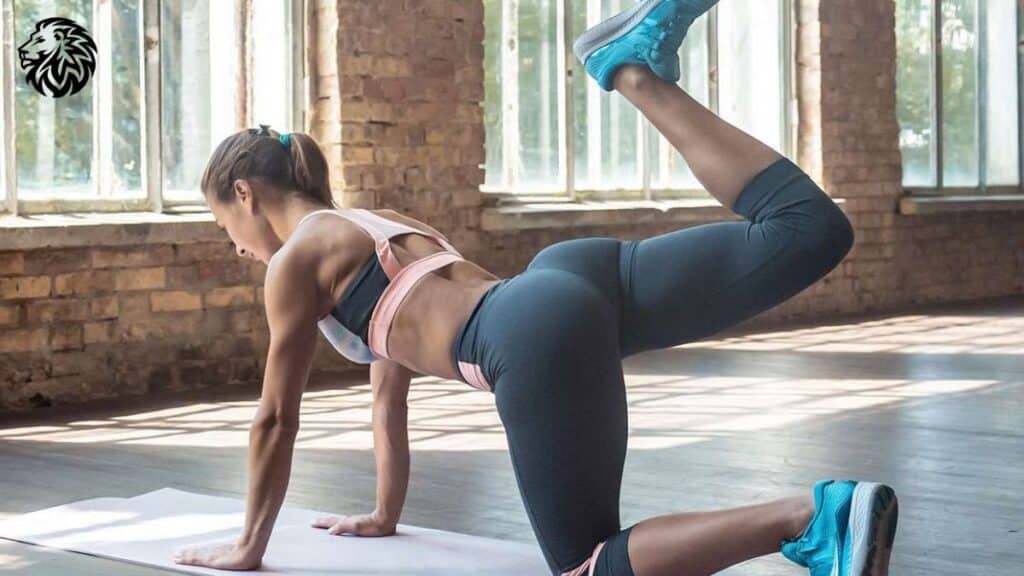
Developing a well-rounded glute-training strategy is paramount to achieving the best results. Here we provide an arsenal of effective approaches and exercises to maximize muscle activation and stimulate growth in the gluteal muscles.
Resistance Training Essentials
- Compound Movements vs. Isolation Exercises
- Compound Movements: Exercises like squats, deadlifts, and lunges work multiple muscle groups at once, including the glutes, which leads to more significant hormonal responses and overall strength and size gains.
- Isolation Exercises: Movements such as hip thrusts and glute bridges target the glutes more directly, which is essential for sculpting and defining the glute muscles.
- Free Weights, Machines, and Bodyweight Exercises
- Free Weights: Barbells and dumbbells allow for a natural range of motion and require the engagement of stabilizing muscles, which can contribute to better muscle balance and coordination.
- Machines: These can help isolate the glutes and are particularly useful for beginners who are learning to engage their glute muscles effectively.
- Bodyweight Exercises: They provide a foundation for form and can be highly effective when resistance equipment is not available.
Sample Beginner, Intermediate, and Advanced Workout Routines
- Beginner Routine: Focus on mastering form with bodyweight exercises before gradually introducing light free weights and machines.
- Intermediate Routine: Incorporate more free weights and increase the intensity of workouts with more challenging compound movements.
- Advanced Routine: Introduce advanced techniques like supersets, pyramids, and drop sets, as well as heavier lifting to promote further muscle growth.
Importance of Compound Movements Like Squats and Deadlifts
- These exercises are pivotal for building a strong foundation and should be included in your routine as they engage the entire posterior chain, which includes the glutes.
Accessory Exercises to Target the Gluteal Muscles
- Accessory exercises like lateral band walks, single-leg deadlifts, and Bulgarian split squats specifically target different aspects of the glutes and should be included to ensure balanced muscle development.
The Role of Plyometrics and Cardiovascular Exercises
- Plyometrics: Jump squats, box jumps, and bounding can enhance power and shape in the glutes by recruiting fast-twitch muscle fibers.
- Cardiovascular Exercises: While not as influential in muscle growth, cardio can help maintain a lean physique, thereby accentuating the glutes. High-intensity interval training (HIIT) can also stimulate the glutes while providing cardiovascular benefits.
By employing these strategies and varying your routines, you can prevent plateaus and continue to see growth and improvements in glute strength and size. Up next, we’ll dive into the specifics of crafting a balanced and progressive glute workout plan that evolves with your fitness level.
The 5 Best Glute Building Exercises and How To Do Them
Here are five effective exercises for glute development, along with instructions on how to perform them:
1. Barbell Hip Thrusts
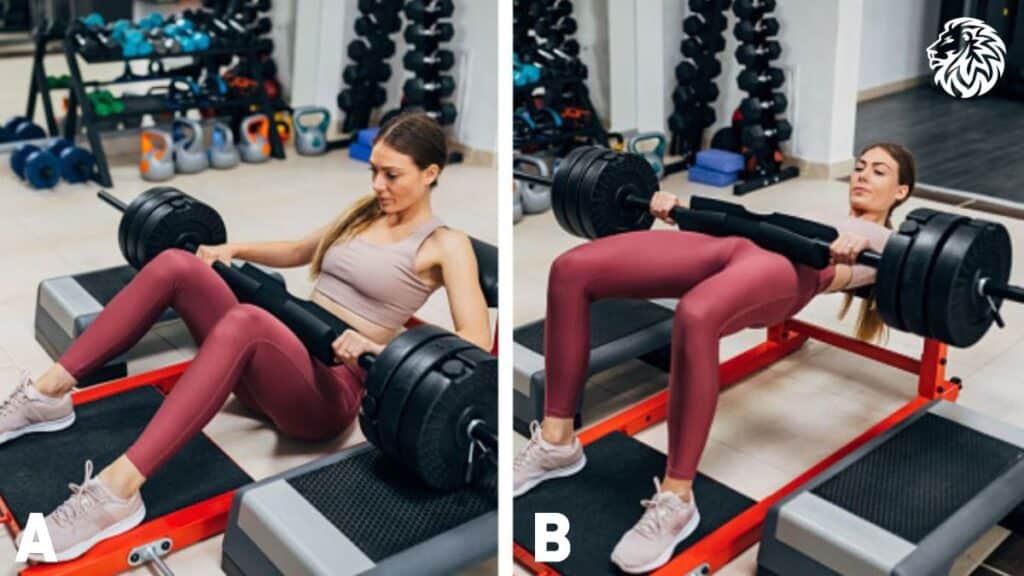
This exercise targets the glutes specifically and allows for heavy weights to be used.
How to do them:
- Sit on the ground with a bench behind you and a loaded barbell over your legs.
- Roll the bar so that it’s directly above your hips, and lean back against the bench so that your shoulder blades are near the top of it.
- Plant your feet flat on the ground about hip-width apart.
- Drive through your heels to lift your hips upward, extending them fully at the top.
- Squeeze your glutes hard at the top of the movement, then lower the hips back down to the starting position.
2. Squats
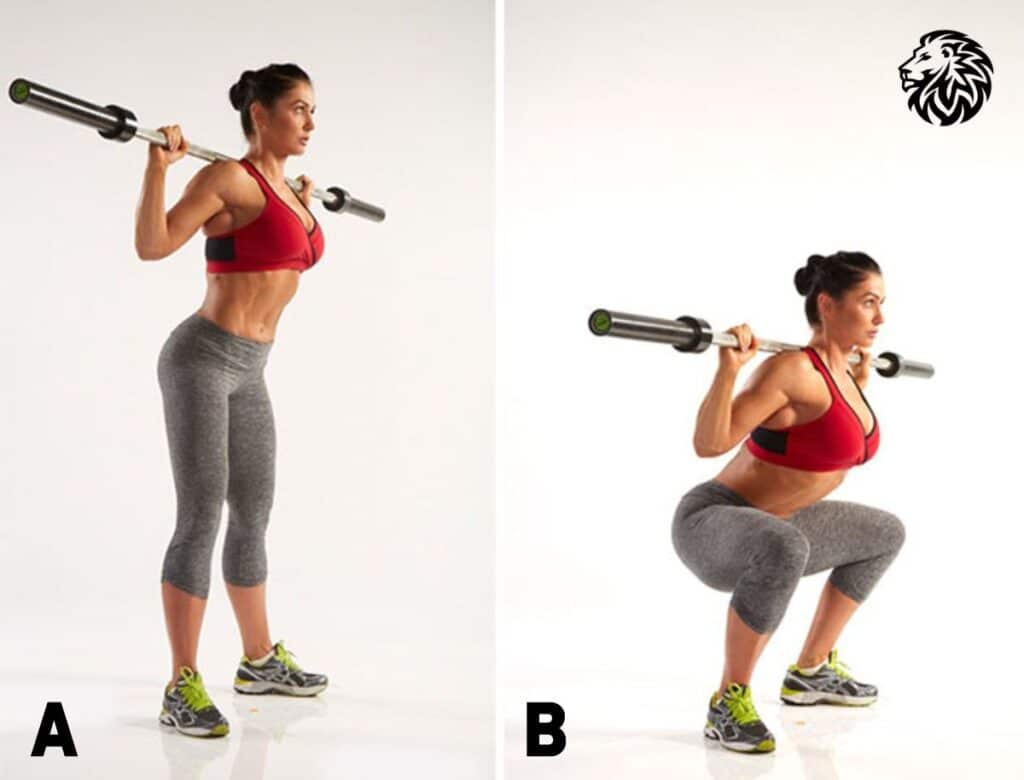
Squats are a compound movement that works the entire lower body, including the glutes.
How to do them:
- Stand with feet a little wider than shoulder-width apart, toes slightly turned out.
- Keep your back straight and chest up as you lower down, bending at the hips and knees as if sitting back into a chair.
- Go down until your thighs are parallel to the ground or as low as you can without compromising form.
- Press through your heels to stand back up to the starting position.
3. Deadlifts
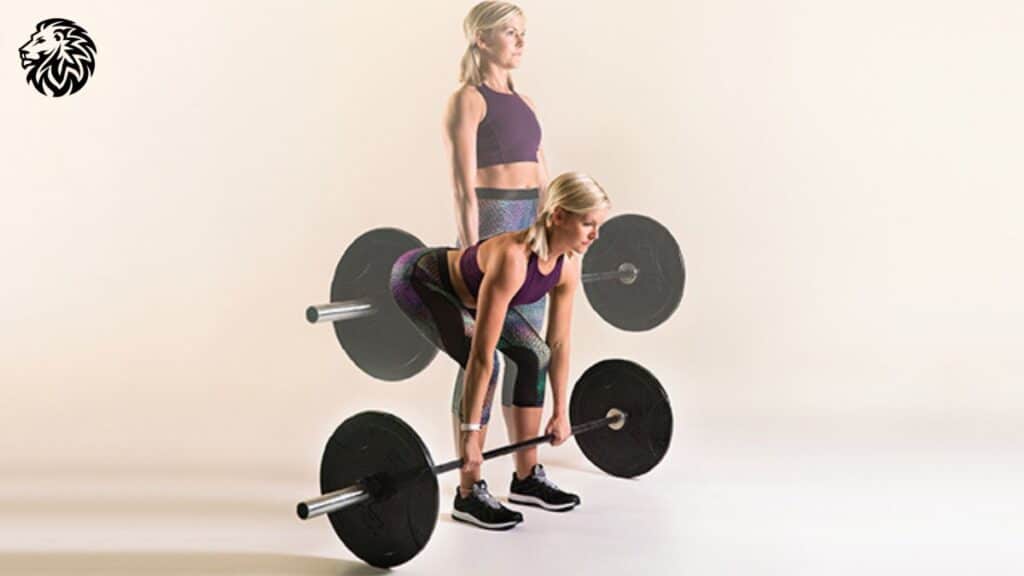
Deadlifts are great for the posterior chain, which includes the glutes.
How to do them:
- Stand with your feet hip-width apart, with a barbell in front of your shins.
- Bend at the hips and knees to grip the bar with hands shoulder-width apart.
- Keep your back straight, brace your core, and begin to lift the bar by extending your hips and knees.
- Keep the bar close to your body as you rise to a standing position.
- Lower the bar back to the ground by bending at the hips and controlling the descent.
4. Bulgarian Split Squats
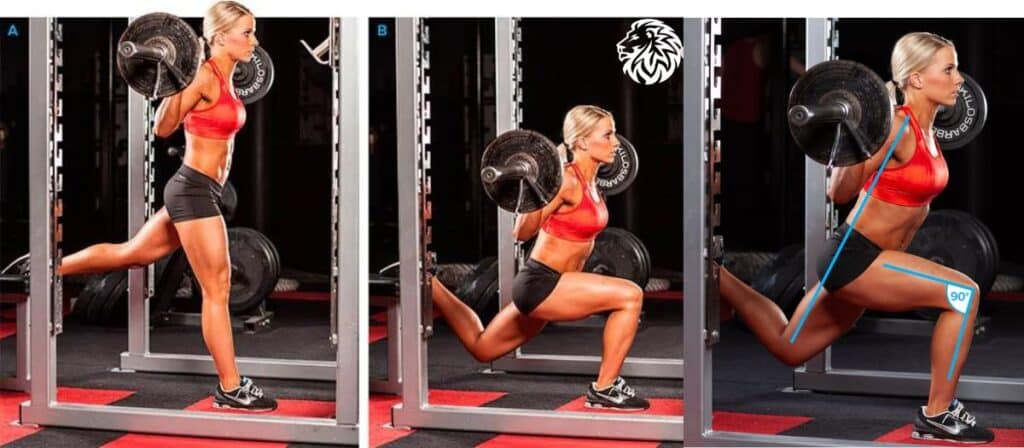
This exercise works each leg individually, which can help address muscle imbalances.
How to do them:
- Stand a couple of feet in front of a bench or step, and place one foot behind you on the bench.
- Lower your hips until your front thigh is almost parallel to the floor, ensuring your front knee stays above your front foot.
- Your back knee should come close to the ground, but not touch it.
- Push back up to the starting position through the heel of your front foot.
5. Lunges
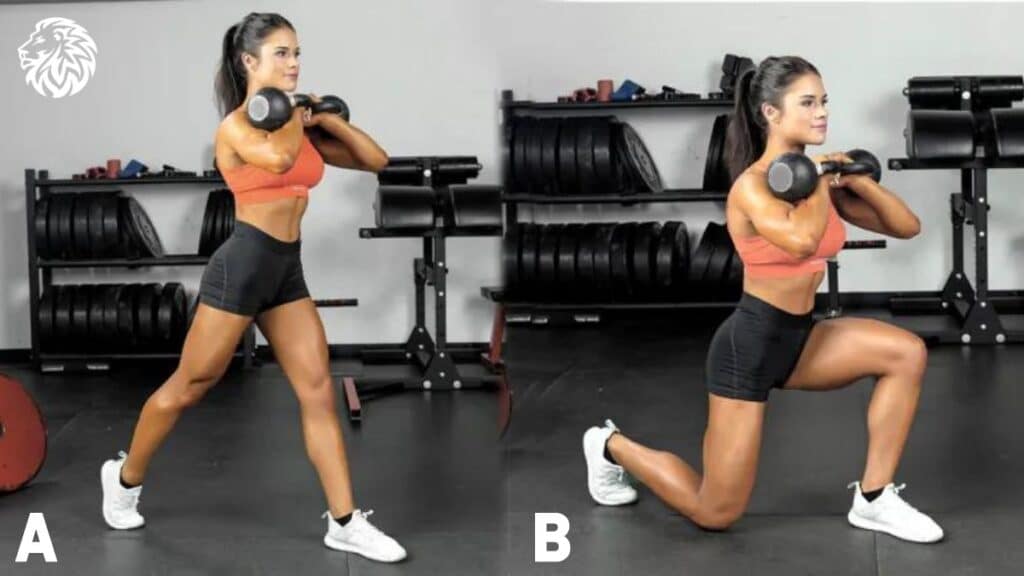
Lunges are another excellent unilateral exercise that hits the glutes well.
How to do them:
- Stand with your feet together and take a big step forward with one leg.
- Lower your hips until both knees are bent at approximately a 90-degree angle.
- The back knee should come close to the ground without touching it, and your front knee should stay above your front ankle.
- Push through the heel of your front foot to return to the starting position.
Monitoring Progress and Adjusting Your Approach

To ensure that you’re on the right path towards achieving your glute-building goals, it’s essential to keep track of your progress and be willing to make adjustments to your approach as needed. Here’s how to stay on top of your game and make informed decisions about your training routine.
Tracking Measurements and Performance
- Body Measurements: Taking regular measurements of your hips and glutes can help you see changes in size and shape over time. This should be done consistently and under the same conditions for accuracy.
- Strength Progress: Keep a workout log to track the weights you lift, the number of repetitions, and how the exercises feel. Over time, you should see improvements in these numbers, indicating increased glute strength and endurance.
- Visual Progress: Photographs taken from the same angles and under similar lighting can be a great motivational tool and provide visual evidence of changes in muscle development.
Adjusting Your Routine Based on Results
- Plateau Identification: If your measurements, performance, and visual progress stall, it’s likely you’ve hit a plateau.
- Routine Adjustments: Changing variables such as exercise selection, rep range, weight used, or even the order of exercises can help you break through plateaus and continue making progress.
- Nutrition and Recovery Reassessment: If progress stalls, revisit your diet and recovery strategies. You might need to increase your caloric intake to support further growth or ensure you’re getting enough rest and sleep for optimal recovery.
When to Seek Guidance from Professionals
- Hiring a Personal Trainer: If you’re unsure about your form, need a personalized plan, or aren’t seeing the results you want, it may be beneficial to consult a personal trainer who specializes in glute development.
- Nutritional Counseling: A dietitian or nutritionist can help you optimize your diet for muscle growth and performance, tailoring your nutritional intake to your specific needs and goals.
- Physical Therapists: If you experience pain or discomfort beyond typical muscle soreness, it’s important to seek the advice of a healthcare professional or a physical therapist to address potential issues before they become serious injuries.
Monitoring progress is not just about celebrating the successes; it’s also about recognizing when changes are needed to keep moving forward. By paying attention to how your body responds and being flexible with your approach, you can continue to see growth and improvements in your glute strength and size.
Developing strong, well-shaped glutes is a journey that combines a smart training plan, sound nutritional strategies, adequate rest, and a lot of patience and consistency. Remember, the key to success is to enjoy the process as much as the results.
Common Myths and Misconceptions

In the fitness world, myths and misconceptions can lead to frustration and set individuals on the wrong path. When it comes to glute growth, it’s important to separate fact from fiction to ensure that your efforts yield the best results. Let’s address some common myths that surround glute development.
Spot Reduction and Spot Enhancement
- Myth: The belief that you can reduce fat in the glutes just by exercising them, or conversely, that you can enhance them solely through targeted exercises.
- Reality: Fat reduction occurs uniformly across the body based on genetics and cannot be targeted by specific exercises. Similarly, while glute exercises will develop the muscles, overall body composition and muscle visibility are also affected by body fat percentage and cannot be enhanced by training alone.
The “Perfect” Timeline for Everyone
- Myth: There is a standard timeline that everyone can follow to see results in glute growth, often perpetuated by transformation stories and online fitness challenges.
- Reality: Muscle growth is highly individual and depends on various factors including genetics, training intensity, diet, and lifestyle. It’s important to set personal goals and be patient rather than comparing your progress to others.
Overemphasis on Supplementation
- Myth: Supplements are essential for making significant gains in glute size and are often advertised as a key component to success in muscle building.
- Reality: While some supplements may provide benefits, they cannot replace the foundational elements of muscle growth: a well-designed training program, proper nutrition, and sufficient rest. Most people will see substantial improvements from focusing on these core elements before considering supplementation.
Dispelling these myths is crucial to fostering a realistic and healthy approach to fitness. By understanding the truths behind glute growth, you can set achievable goals, follow a sensible training and diet regimen, and maintain a positive and patient mindset throughout your fitness journey.
Conclusion
As we reach the end of our comprehensive guide to glute growth, it’s time to reflect on the key points we’ve covered and to consolidate our learning into a coherent blueprint for success. With the correct approach and mindset, you can achieve the strong, well-shaped glutes that are not only aesthetically pleasing but also contribute to overall fitness and health.
Recap of the Key Points Discussed:
- Understanding Glute Growth: We delved into the biology of muscle hypertrophy, the role of genetics and hormones, and the unique aspects of the glute muscles.
- Timeline for Growth: We established that glute growth is a gradual process with different stages, from neurological adaptations to long-term hypertrophy, and strategies to overcome plateaus.
- Factors Affecting Growth: We emphasized the importance of nutrition, training variables, rest, recovery, and the crucial role of consistency and patience.
- Effective Training Strategies: We offered insights into resistance training essentials, the importance of compound movements, accessory exercises, and the inclusion of plyometrics and cardiovascular exercises.
- Monitoring Progress: We highlighted the importance of tracking your progress and making necessary adjustments to your training and diet based on the results.
Building your glutes is a marathon, not a sprint. Patience, persistence, and a balanced approach are your best allies in this journey. Embrace the process, celebrate small victories, and stay committed to your long-term vision.
Final Tips for Sustainable Glute Growth:
- Stay Educated: Continue learning about anatomy, nutrition, and exercise science to refine your approach as you grow stronger.
- Be Flexible: Be willing to adapt your training regimen as your body and goals evolve.
- Listen to Your Body: Rest when needed and adjust your diet and exercises to prevent injury and promote continued growth.
- Seek Support: Don’t hesitate to reach out to professionals for guidance to enhance your routine or get through tough plateaus.
Remember that everyone’s journey to glute growth is unique, so comparisons to others are not only futile but can also be demotivating. Focus on your own progress, and let the success of others inspire rather than discourage you.
By embracing the principles we’ve discussed, you’ll be well-equipped to enhance your glutes effectively and sustainably. Here’s to your strength, health, and confidence as you work toward your fitness goals!
